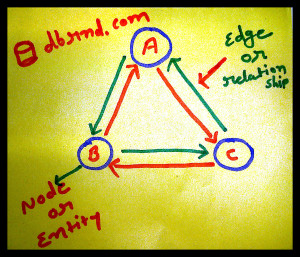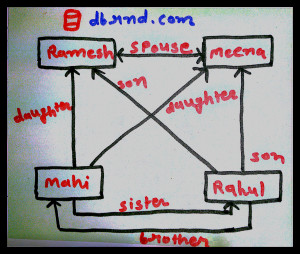This article is half-done without your Comment! *** Please share your thoughts via Comment ***
Today, I am going to discuss the Graph Based Store Data Model of NoSQL, which is completely different than the previous three models.
Some of the most popular Graph-Based Databases are OrientDB, Neo4j, FlockDB.
What exactly it is?
There are main two words, which are the central part of Graph Based Store Database.
1. Node or Entity.
2. Edge or Relationship.
The main idea of this model is linking, and grouping related pieces of information.
This model represents the connections between two or more entities which are direct or indirect connected.
One of the best examples is:
The model of Social Network like Facebook Friend’s connections. In this model, directly or indirectly we can connect to N number of friends.
Another example of applications is Transport Links, Map and Spatial System, Routing System, Network Topologies System.
When we are trying to store a graph structure in RDBMS, We can store very limited and a single type of relation and adding an another relation type requires changing schema structure.
A Graph Based Store database is a schema-free and we can scale up to any level by adding a different type of Entities and Relations. (Nodes and Edges)
How exactly it works?
Each node is defined by a unique identifier and each edge represents a relationship between two nodes.
Each node can have an unlimited number of relationships, and each edge should be directional.
All the value is derived from the relationships, and it has not only a start-node and an end-node, but it has also set of properties like relation type, time of established, the distance between two nodes and other.
We can use these properties to query the graph.
Each node can have a different type of relationship which is defined by different ways like category, different time information, indexing, different path information.
It is very easy to adding a new relationship, changing existing nodes in the graph.




